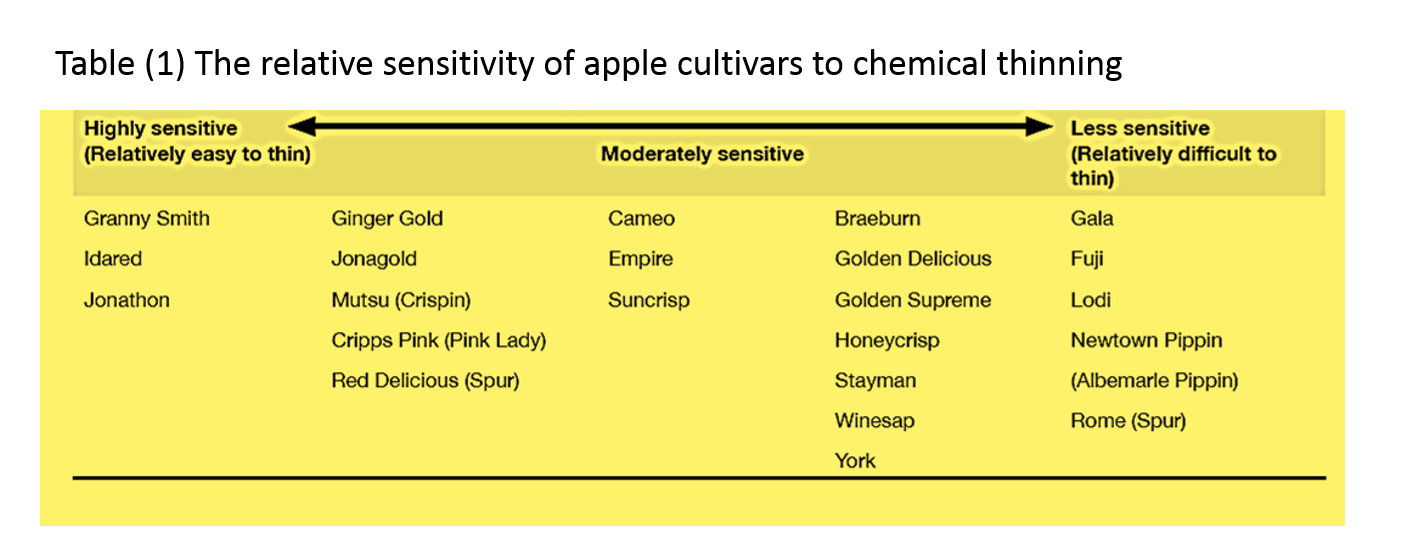I ran the carbohydrate-thinning model today for Winchester and Central Virginia, and it seems like we are in the right time for fruit thinning, in terms of fruit size, weather conditions, and the tree carbohydrate status. The average fruit size is between 8 – 15 mm, and the temperature will be 88 oF and 92 oF tomorrow (May 12) in Winchester and Central Virginia, respectively. The carbohydrate model predicts carbohydrate deficit until May 17 in both areas. The model recommends reducing the rate of chemical thinners by 15 – 30%. I would not encourage you to follow this rule, especially with the hard-to-thin apple varieties, like Fuji, Gala, Rome, York and Honeycrisp (see the table below). I would even use the higher dose of chemical thinners at this stage, and make it one strong thinning application, instead of two mild applications. Trees will respond well to 6-BA and NAA at this stage, and the likelihood of overthinning is low. It is not recommended to use NAA with Fuji and Red Delicious; as this may result in pigmy, seedless fruits. Instead, you can try a higher concentration of 6-BA (at 200 ppm), with carbaryl (1 pint) and a non-ionic surfactant (e.g. Regulaid). 6-BA is more effective when temperatures are above 85 oF and it increases the rate of cell division and final fruit size. NAA should give better results with Honeycrisp and York. You can use up to 10 ppm of NAA and mix it with carbaryl (1 pint/ a 100 gal) and a surfactant. If you do not know what chemical to use with your cultivar, use 6-BA. For de-fruiting young apple trees, use the maximum rates of chemical thinners (i.e. NAA at 10 ppm, carbaryl at 2 pint/100 gallon, and a Regulaid at 1/2 pint/100 gal).



